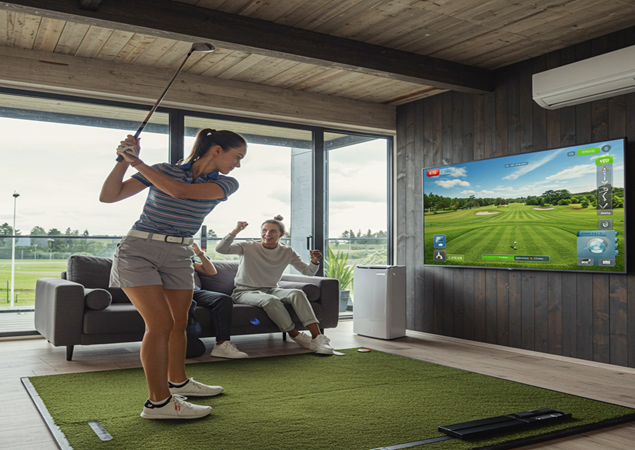Golf isn’t just a game of physical skill; it’s a sport that requires sharp decision-making. Every shot involves choosing the right club, determining the optimal target, and assessing risks. Golf simulators provide a controlled environment where players can practice both swing mechanics and strategic thinking, making it easier to develop strong decision-making skills.
Why Decision-Making Matters in Golf
Strong decision-making leads to better shot selection, fewer mistakes, and improved consistency on the course. Even a technically perfect swing can fail if paired with a poor choice of club or target. Practicing decisions in a simulator helps players learn to evaluate situations quickly and confidently, building both mental and technical competence.
Using a Swing Trainer with a Simulator
Incorporating a swing trainer into your simulator sessions enhances decision-making practice. Swing trainers promote proper mechanics, alignment, and tempo, ensuring that your decisions are supported by reliable execution. By combining real-time simulator feedback with training stick reinforcement, golfers can test decisions and immediately see the results of their choices.
Structuring Decision-Making Practice
To improve your golf decision-making skills using a simulator:
- Warm-Up: Stretch your arms, shoulders, and torso to prepare for focused practice.
- Analyze the Scenario: Study the virtual hole layout, including hazards and target zones.
- Make a Plan: Choose the club and shot type you intend to use.
- Execute with Swing Trainer: Perform the swing using proper technique, focusing on controlled tempo.
- Review Feedback: Evaluate the outcome using simulator metrics and adjust your decisions accordingly.
- Repeat: Practice multiple scenarios to reinforce smart choices and refine swing execution.
This methodical approach builds both technical skill and strategic thinking.
Benefits of Simulator Decision-Making Practice
- Safe Learning Environment: Test different strategies without penalty or lost balls.
- Immediate Feedback: Understand how your decisions affect ball flight, distance, and accuracy.
- Confidence Building: Repeated practice reinforces correct choices and execution.
- Skill Transfer: Simulator practice translates directly to better performance on real courses.
Decision-making improves rapidly when combined with reliable swing mechanics and instant feedback.
Conclusion
Using a simulator to improve decision-making is an effective way to enhance overall golf performance. Incorporating a swing trainer ensures that your chosen strategies are executed consistently, reinforcing both mental and physical aspects of the game. By practicing thoughtful decision-making in a controlled environment, golfers can enter real rounds with confidence, accuracy, and a stronger understanding of course management.

